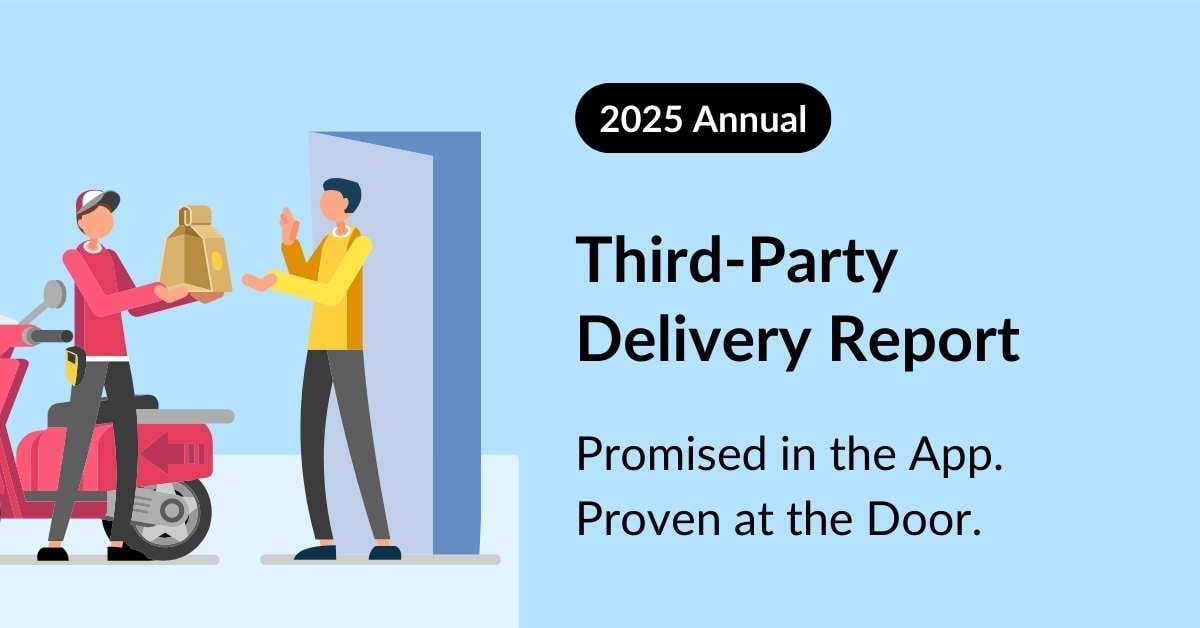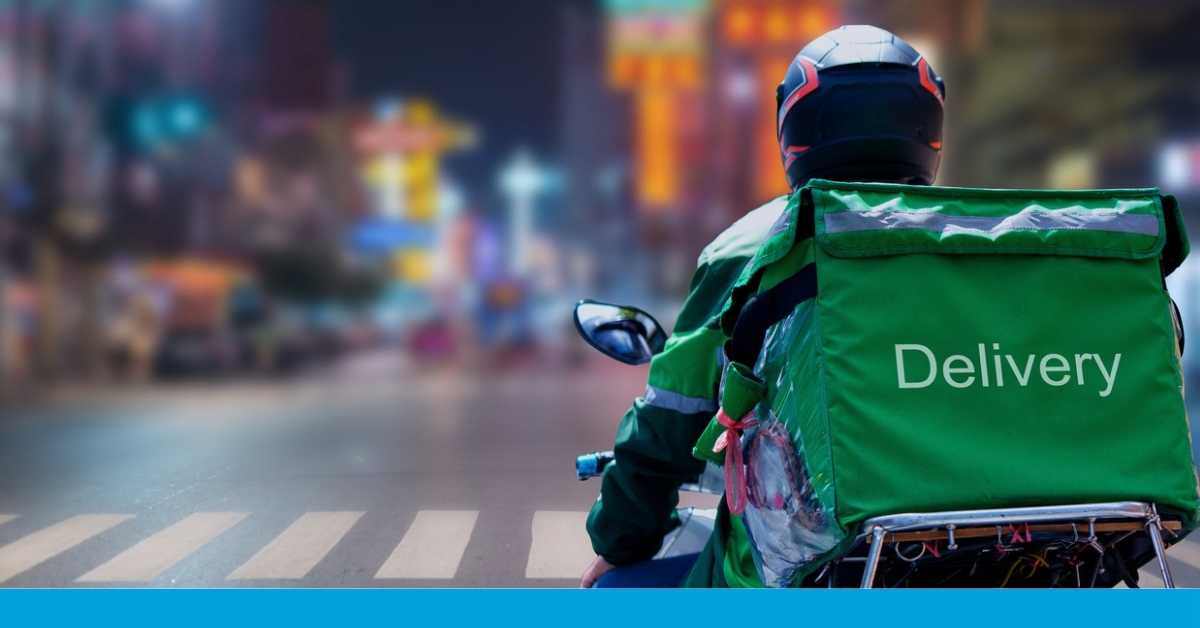What the Data Says About In-House (First-Party) Delivery vs. Third-Party
Scroll through a delivery app today, and the customer relationship clearly sits with third-party giants. Uber Eats. DoorDash. Grubhub. They’ve shaped...

Delivery used to be a restaurant advantage, but new players are now competing on speed and pricing, challenging what diners expect when they order a full meal.
Our 2025 Third-Party Delivery Study shows that both restaurants and convenience stores are converging on the same goal: fast, reliable, and satisfying delivery. But they’re taking very different routes to get there.
C-Stores have earned their seat at the table. 72% of consumers now see them as a viable alternative to QSRs for made-to-order meals. That shift makes this year’s head-to-head comparison more revealing.
So, who delivers better?
To find out, Intouch Insight conducted mystery shops of 600 delivery orders: 450 third-party delivery, 150 first-party delivery, all split evenly across restaurants and c-stores. We measured key metrics like speed, accuracy, fees, satisfaction, and the subtle differences that define the modern delivery experience.
Here's what we found.
Restaurants continue to set the bar for order accuracy, achieving 89% accuracy vs. 82% for c-stores for orders placed through third-party platforms. That margin may reflect tighter kitchen coordination and more standardized prep environments.
C-Stores, however, are still making progress. Accuracy improved by 5 percentage points over last year. Still, made-to-order items remain a challenge, driving more than half of all inaccurate deliveries.
For restaurants, the focus on accuracy sits squarely in their hands. Technology may influence results since menu updates, modifiers, and timing details pass through multiple systems that need to stay aligned.
Timing also plays a clear role. Restaurant accuracy reached its highest point late at night at 94%, while c-stores saw performance drop to 70% after 8 p.m.
Get the full breakdown of order accuracy in the 2025 Third-Party Delivery Report.
Restaurants still lead overall satisfaction at 90%, compared to 83% for c-stores, but that seven-point gap continues to narrow (down from 11 points in 2024).
And it’s not uniform across the day.
C-Stores are improving year over year, but restaurants remain the benchmark for consistent delivery quality and overall satisfaction.
Shopper Quote: “The ordering experience was very easy. The initial time delivery estimates are a bit shocking at first, especially since this location was about a 10-minute drive from me. However, the order arrived much earlier than the initial delivery time, which left me pretty satisfied. Food arrived exactly as I ordered it.”
When it comes to order flexibility, restaurants lead by a wide margin. On third-party platforms, 90% of restaurant customers said they could customize their order, compared to 43% for c-stores. The gap grows even larger on first-party apps, where 97% of restaurant users had customization options versus 57% for c-stores.
Across every food category, from pizza to burgers, restaurants allowed significantly more menu customization, while c-stores offered limited options to modify orders.

This difference may speak to customer expectations: diners see restaurant menus as experiences to tailor, while c-store orders focus on immediacy.
And the demand for that flexibility is growing. A DigInsight study found that 75% of Gen Z diners customize their orders, reinforcing how important control has become in the delivery experience.
Shopper quote: “Everything was made correctly. I added customizations to see if they would get included, and they were. It was easy to place my order and make any customizations. The food was at the correct temperature and delicious.”
Delivery time is a defining moment of the entire experience. It’s visible, measurable, and when missed, memorable for the wrong reasons.
This year, restaurants averaged longer delivery times through third-party apps, coming in at 35 minutes 39 seconds compared to 32 minutes 41 seconds for c-stores.
The story behind that gap lies in the platforms. DoorDash cut c-store delivery times by more than two minutes year over year, while restaurant times lengthened by almost five minutes. The report also showed that Uber Eats took longer to deliver orders placed with restaurants compared to c-stores.
But the question remains: did c-stores hold the same edge in delivery time over restaurants when orders were handled through first-party channels?
Grab a hold of the Third-Party Delivery report to find out!

Food temperature has evened out between the two formats. According to our 2025 third-party delivery report, c-stores rose by 3 percentage points since 2024 to reach 90% acceptable delivery temperature, matching restaurants.
Restaurants, meanwhile, saw a slight decline from last year’s results.
That’s a remarkable turnaround given restaurants’ historical advantage in packaging and prep. The data also shows that temperature satisfaction drops when drivers make multiple stops, which could indicate a challenge for c-stores that depend heavily on third-party fleets.
Still, for smaller, faster orders, customers now perceive temperature quality on par with restaurants.
Curious about the different delivery channels?
See what the data says about in-house delivery vs. third-party delivery.
C-stores also had the biggest shifts in affordability according to this year’s report. DoorDash led the shift, cutting total c-store delivery fees from $7.58 to $4.38, while Grubhub followed with a reduction of more than a dollar. Uber Eats made smaller changes for c-stores but lowered its restaurant total fees by a larger margin, standing out as an outlier among platforms.
By comparison, restaurant fees fell more modestly, and first-party restaurant deliveries remained the highest overall. These price changes are bringing c-store delivery closer in line with quick-service restaurants, turning what once felt like a costly convenience into an accessible daily choice.
As the report puts it: Operators aren’t just sending meals. They’re delivering experiences and earning trust with every tap.
At their core, restaurants and c-stores are chasing the same customer. The one who wants food now, without friction. Restaurants bring tradition, variety, and trust. C-Stores bring proximity, predictability, and speed. Both are learning to deliver what today’s diner values most: What’s promised in the app shows up at the door.
For customers choosing delivery, those boundaries are beginning to blur, and the competition is intensifying.
See what the mystery shopping data in our latest report reveals about how restaurants and c-stores compare.
This is the final part of a three-part blog series on this year's third-party delivery trends.
Back: What the Data Says About First-Party Delivery vs. Third-Party | Part 1: 2025 Third-Party Delivery Trends

Scroll through a delivery app today, and the customer relationship clearly sits with third-party giants. Uber Eats. DoorDash. Grubhub. They’ve shaped...

Having food delivered fresh to your door was once a novelty. Today the conversation steers toward speed, accuracy, temperature, satisfaction, and...

Pizza delivery has come a long way from a simple phone call and a 30-minute wait. Today, customers expect speed, accuracy, and a hot, fresh pizza...